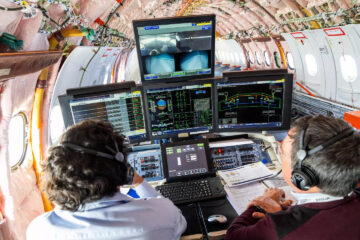Airbus flies first A321neo on 100% unblended SAF

Airbus has completed its first A321neo flight with both engines powered by 100% SAF. The flight was the latest in a series of tests from the European OEM, designed to test unblended SAF’s potential of reducing aviation emissions.
The aircraft took off yesterday (March 9th) from Airbus’ headquarters in Toulouse, France, followed closely by a data collecting Dassault aircraft (pictured above).
The A321neo used was powered by LEAP-1A engines from CFM International in the firm’s latest attempt to assess the potential benefits of unblended SAF versus conventional aviation fuel. It is the first Airbus single-aisle aircraft to test 100% SAF on both engines, following previous tests using the A350 and A330MRTT.
To gather information from this flight, a modified Dassault jet from the German Aerospace Center (colloquially known as a chase aircraft) was flown within 100 metres (328ft) of the A321neo. The team then use the testbed’s sensors to capture emissions data for detailed analysis of the CO2 and non-CO2 emissions and the creation of contrails (pictured below).

The flights are the latest in the VOLCAN project, the acronym of “vol avec carburants alternatifs nouveaux” (or “flight with new alternative fuels”).
Partners on the project are aerospace companies: Safran and Dassault Aviation, the French national aerospace research centre Office National d’Etudes et de Recherches Aérospatiales (ONERA) and the French Ministry of Transport. The venture is co-funded by the French Council for Civil Aeronautical Research (CORAC).
Airbus said that analysing unblended SAF’s performance and its potential in reducing emissions is vital in the mission to decarbonise the aviation industry.
According to the firm, all its commercial and military aircraft, as well as helicopters are currently capable of flying with up to a 50% blend of SAF. Airbus said it aims to ensure 100% SAF capability by 2030 for these aircraft.
